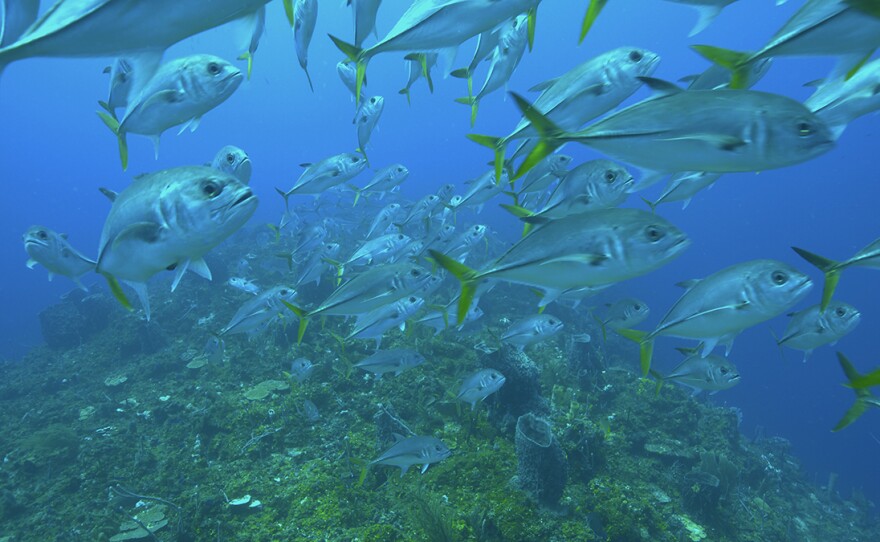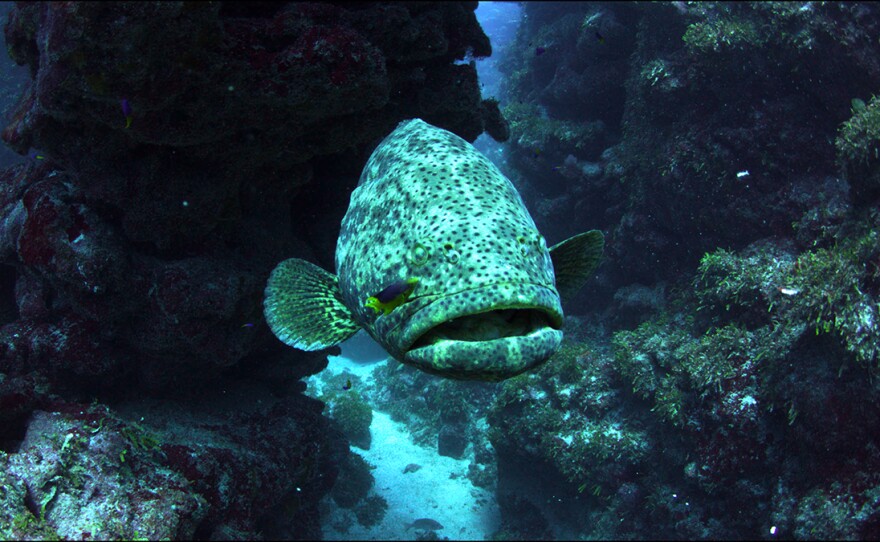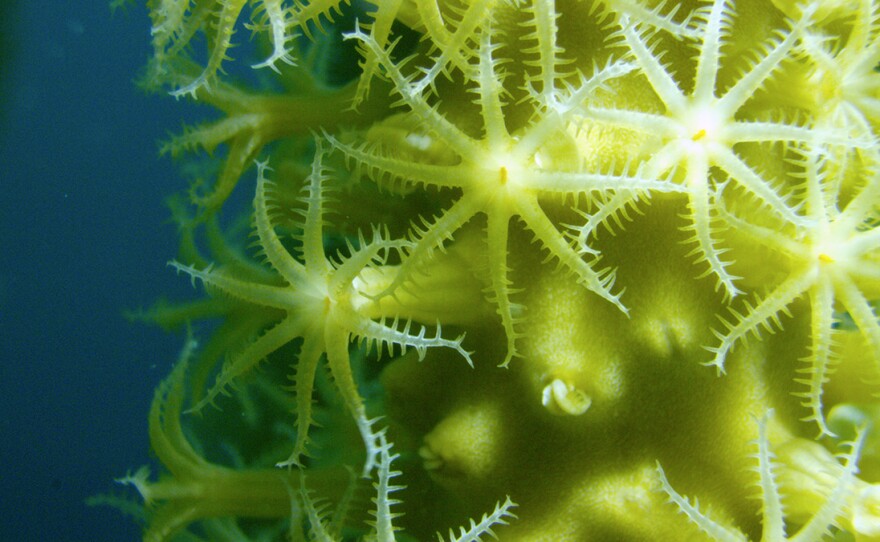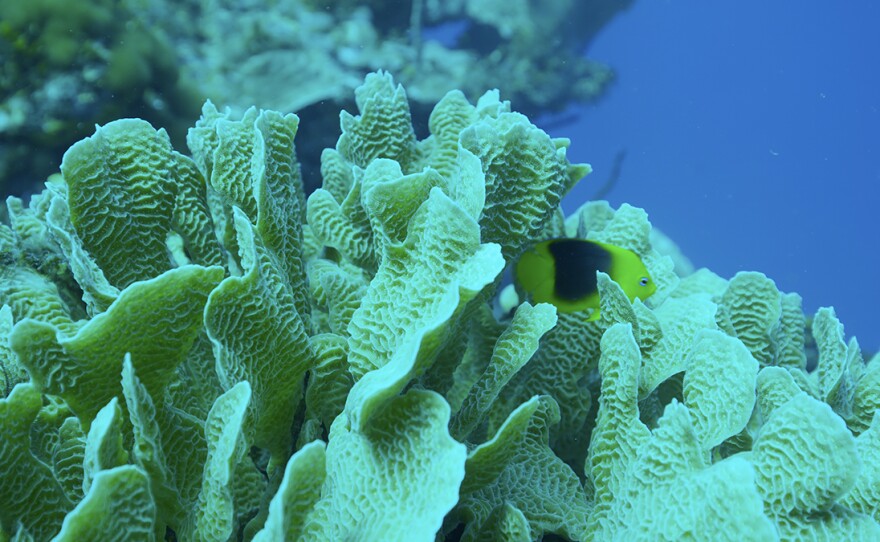Premieres Wednesday, April 26, 2023 at 8 p.m. on KPBS TV / PBS App + Encores Sunday, April 30 at 3 p.m. on KPBS TV and 8 p.m. on KPBS 2
The year is 2013. In the waters of Belize and Guatemala, a desperate fisherman takes his small boat into the open ocean in search of fish. Encountering engine trouble, he peers over the side of his boat and can’t believe his eyes. Below is an uncharted, massive crown of rocks and corals, teeming with life. Viewers can see this natural wonder for the first time in NATURE “Treasure of the Caribbean.”
Dubbed “The Cayman Crown,” this secret coral garden that surpasses the size of Manhattan is a refuge for a vast array of underwater life, from schools of yellow jack and blue tang to bottlenose dolphins to the critically endangered – and commercially important – Nassau grouper. Up to one-third of the globe’s coral has been lost in the past few years.

While not wholly immune to the dangers that face other reefs, such as overfishing, bleaching and invasive species, this reef’s remarkable resilience is likely due to its position on the edge of the Cayman Trench. Cold currents rising from the depths sweep nutrients up to the reef and cool the corals.

Additionally, the reef has an abundance of slow-growing corals that can withstand warming waters and fast-growing corals that can proliferate like weeds after bleaching events.
The Cayman Crown was given protected status in 2020 by Belize and Guatemala, but there is still much to be done to ensure its conservation. In “Treasure of the Caribbean,” hear from scientists and fishermen who worked together to research this reef for nearly a decade before revealing its existence to the public.
From mapping the reef and cataloging its inhabitants; to pioneering new ways to use underwater acoustics to discern how fish rely on sound; to experimenting with new approaches to protect breeding fishes, their insights give hope for future reef conservation.

Filmmaker Quote:
“This project brought together a diverse group of people from all over the world: filmmakers, scientists, and the fishing communities,” said Ana Salceda, director and producer. “Over the five years it took us to make the film, the team surmounted all kinds of challenges, from storms to bleaching events and even a global pandemic. Not only did we produce this beautiful film, but we also got the reef protected in the process. What’s really important to me is that this project has become a beacon of hope for the entire region, showcasing the enormous power of nature films to make a difference on the ground.”

Watch On Your Schedule:
Premiering nationwide Wednesday, April 26 at 8/7c on PBS, pbs.org/nature, YouTube and the PBS app.
Credits:
A production of The WNET Group, Terra Mater Studios, BelugaSmile Productions and HHMI Tangled Bank Studios in co-production with Doclights/NDR Naturfilm. The documentary is produced and directed by Ana Salceda and edited by Mark Fletcher. For HHMI Tangled Bank Studios, John Rubin and Sean B. Carroll are Executive Producers. For Terra Mater Studios, Ivo Filatsch and Sabine Holzer are Executive Producers. For NATURE, Fred Kaufman is executive producer. Bill Murphy is series producer and Janet Hess is series editor. NATURE is a production of The WNET Group.

“This extraordinary discovery marks a new chapter in understanding corals and in saving coral reefs worldwide," said Fred Kaufman, executive producer for NATURE. “We are proud to present this film on NATURE and hope this awareness leads to an increased protection of reefs around the globe.”






